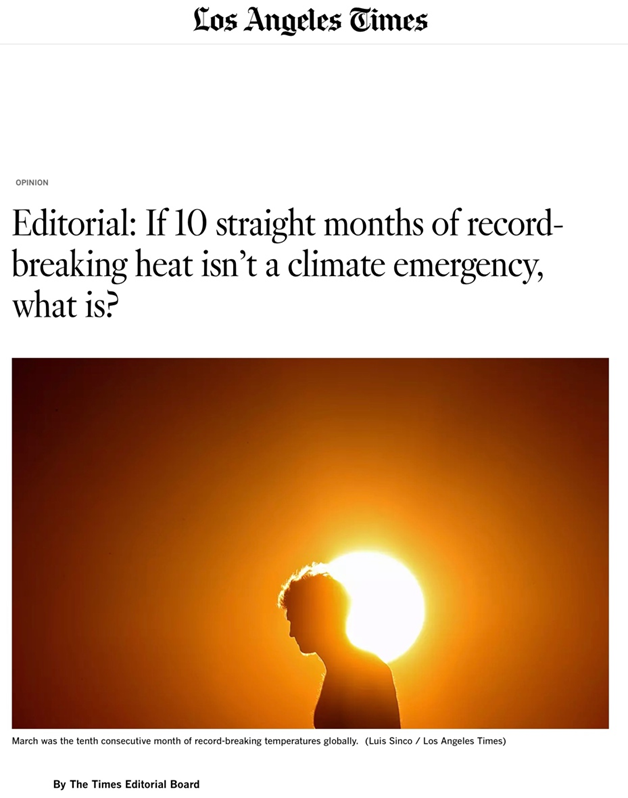By Kenneth Richard on 1. March 2018
The CO2-Controlled Arctic Sea Ice
Narrative Continues To Crumble
Image Source: H.H. Lamb (1982) Climate, History, and the Modern World
In his seminal 1982 book Climate, History, and the Modern World, the renown climatologist Dr. H.H. Lamb revealed that sea ice in the subarctic and Arctic regions was much less extensive during the Medieval Warm Period (9th-13th centuries) compared to today.
For example, records indicate that there were decadal and centennial-scale periods without any sea ice invading any of Iceland’s coasts. These no-ice periods coincided with atmospheric CO2 concentrations of 275 ppm, which is about 130 ppm less than today’s calculated CO2 values.
Considering climate models are predicated on the presumption that the higher the CO2 concentration, the greater the loss of sea ice, these long-term trends strongly suggest that CO2 concentration changes are not the modulators of polar sea ice changes they are claimed to be. After all, for the last 35 years, Southern Hemisphere sea ice extent has been steadily rising (Comiso et al., 2017), and during the last 90 years, Arctic sea ice has undergone an oscillation rather than a linear recession (Connolly et al., 2017).
Arctic Sea Ice Was Less Extensive Before Man-Made CO2 Emissions Began Rising (~1950s)
Anthropogenic CO2 emissions really didn’t begin rising until about 1950.

Since the 1950s, however, there has been a slight overall sea ice extent increase in many regions of the Arctic and subarctic. For example, sea ice cover north of Iceland was lower than now during the 1925-1960 period — when CO2 concentrations hovered between 310 and 320 ppm.


In Southwest Greenland, the overall sea ice concentration has grown dramatically since the 1930s. The modern (2010) extent is no lower than it was during several decadal-scale periods in the 18th century.


In the Arctic’s Beaufort Sea, the surface temperatures were 3°C warmer than now and sea ice cover values averaged 1.1 months lower than today during 1887-1945, or when CO2 concentrations puttered around 300 ppm.
“Sea surface temperature [Arctic Ocean] between ∼ AD 1885–1935 are warmer by up to 3°C with respect to the average modern temperature at the coring site.
“For the period ∼ AD 1887–1945, reconstructed sea ice cover values are on average 8.3 months per year which is 1.1 months per year lower than the modern values.”
A New Paper Documents An Overall Rising Sea Ice Trend Since The 1920s-’40s In West Greenland
In a new paper, Allan et al. (2018) find the months-per-year sea ice cover during the last century (1900-2007) are quite similar to the average months-per-year sea ice cover during the 1600 B.C.E. to 500 C.E. period in West Greenland. Upon close inspection, their reconstruction also shows that most of the lowest sea ice cover values of the last century occurred during the 1920s to 1940s, with a sharp spike and an overall increase after the 1950s.
“Our record shows variations with a mean 200 years periodicity until ~2 ka BP, which supports the hypothesis of climate variations driven by solar variability. After 1.5 ka BP, our data show a variability characterized by a 60–70 year periodicity, which suggests linkages with the Atlantic Multidecadal Oscillation and southwestward migration of the atmospheric polar front. The most recent part of the record, from ~1900 CE to 2007 CE, is characterized by assemblages reflecting warmer surface conditions and reduced sea ice cover.”


Throughout Much Of The Holocene, The Arctic Ocean Periodically Became Ice Free…While CO2 Was Stable And Low
Scientists have determined that sea ice in the Arctic Ocean was “greatly reduced” and likely “periodically ice free” during the Early- to Mid-Holocene, when CO2 concentrations lingered around 260 ppm.

In The Canadian Arctic, Temperatures May Have Reached 6°C Warmer Than Now, With 4 Months More Open Water (No Ice) Than Present
The Canadian Arctic sea ice cover fluctuated rapidly during the Mid-Holocene (6500 to 2600 years ago), with temperatures ranging between about 3°C colder to 6°C warmer than now, and sea ice cover spanning 2 months more to 4 months less per year compared to today. These warming and cooling events took as little as 50 to 100 years to develop. Throughout these rapid decadal- and centennial-scale changes, CO2 concentrations remained both stable and low.
Mudie et al., 2005
“Our data show that from ∼6500 to 2600 yrs BP, there were large oscillations in [Canadian Arctic] summer SST [sea surface temperatures] from 2–4°C cooler than present to 6°C warmer and SIC [sea ice cover] ranged from 2 months more sea ice to 4 months more open water [than present]. The warming took ∼50–100 years and lasted ∼300 years before replacement by colder intervals lasting ∼200–500 years.”

In The Arctic’s Chukchi Sea And N. Iceland, Proxy Data Indicate That Modern Sea Ice Values Are Still Higher Than Much Of The Holocene


Nothing Unusual About Modern Sea Ice Extent … ‘Internal Variability’ Responsible For Half The Sea Ice Loss Since 1979
“Observations reveal multidecadal variations in Arctic surface air temperature (SAT), and amplified Arctic warming similar to that observed in recent decades also occurred during 1930–1940. Both observations and climate modeling results suggest that the reduced Arctic sea ice is crucial for the early twentieth century Arctic warming, and internal variability is a very likely cause for that event. … The estimated increase in the Atlantic heat transport into the Arctic since 1979 is consistent with the strengthening of AMOC since the mid 1970s implied by indirect evidence such as the AMOC fingerprints, and could have contributed substantially to the observed summer Arctic SIE decline. If the AMOC and the associated Atlantic heat transport into the Arctic were to weaken in the near future due to internal variability, there might be a hiatus in the decline of September Arctic SIE, and a delay in attaining a summer ice-free Arctic. … Since the two predictors (HTBSO and AD) are independent from each other, together, they have contributed ∼49% of the observed September Arctic SIE decline trend (1979−2013), i.e., about halfof the observed September Arctic SIE decline trend since 1979 might be due to internal variability.”






